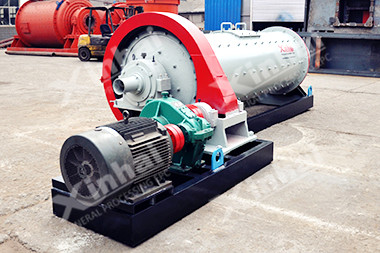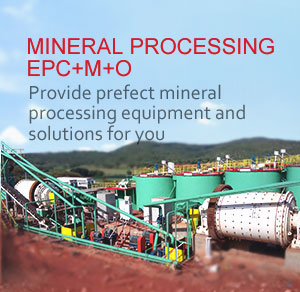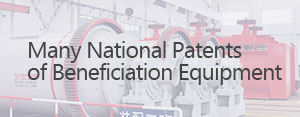- Home
- About
-
Mineral Processing EPC+M+O

Providing optimized solutions for your mine, one-stop service for mineral processing plant!
View details -
Product
- Grinding
- Classifying
Grinding & Classifying
- Flotation
- Gravity Separation Equipment
- Magnetic Equipment
- Gold Extraction Equipment
- Washing Equipment
Separating Process
- Thickening
- Dewatering Machine
Thickening & Dewatering
- Accessories
- Auxiliary Product
Consumables

Xinhai mineral processing equipment mainly include: grinding equipment, flotation equipment, dewatering equipment, magnetic separation equipment, and so on. Some of the equipment is Xinhai independent research and development, and has been awarded national patent. View details
-
Solutions
- Gold Tailings
- Tailings
Tailings

Gold CIP Production Line adsorbs gold from cyaniding pulp by active carbon including 7 steps: leaching pulp preparation, cyaniding leaching, carbon adsorption, gold loaded carbon desorption, pregnant solution electrodeposit, carbon acid regeneration, leaching pulp. View details
- Case
-
News
- Contact
What are the Technologies for Lithium Production
2025-04-23 XinHai Views (20)Primary Lithium Extraction and Beneficiation Methods
Getting lithium out of ore needs several integrated steps to get the most recovery and purity. Shandong Xinhai Mining Technology & Equipment Inc. provides complete solutions for lithium processing plants. They combine advanced testing work with customized plant layouts.
The main beneficiation methods for lithium ores are as follows:
Flotation: It's seen as a key beneficiation method for lithium, especially for fine - grained ores. Both positive and reverse flotation are used. In positive flotation, collectors make lithium minerals stick to bubbles. In reverse flotation, the unwanted minerals float away, leaving behind lithium concentrate. Xinhai offers different types of flotation cells, like suction mechanical agitation cells (SF, BF, XJ) and air - inflation mechanical agitation cells (KYF, XCF). They can also set up KYF–XCF combinations to make things more efficient.
.jpg)
Magnetic Separation: This is used to remove iron impurities from lithium ores such as lithiophane. High - intensity magnetic separators are used to separate weakly magnetic iron minerals.
.jpg)
Heavy - Media Beneficiation: This works well for spodumene with bigger crystal sizes. A heavy medium cyclone uses a thick suspension to separate minerals by density. This gives dense lithium - rich material and lighter waste like quartz and feldspar.
.jpg)
Gravity Separation: Even though the density difference between lithium and the unwanted minerals is not that big (0.2–0.5 g/cm³), gravity methods can separate denser by - products like tantalum and niobium. Spiral chutes are also good for fine lithium ores with low clay content.
.jpg)
Combined Beneficiation Methods: Complex ore bodies usually need multi - stage processes. Common setups include combining flotation and magnetic separation, or flotation, gravity separation, and magnetic separation, or even flotation and chemical leaching.
Key Equipment in Lithium Processing
A complete lithium processing plant has the following machines:
Crushing and Grinding Equipment: First, jaw crushers are used for the initial crushing of the ore. Then cone crushers are used for the second and third stages of crushing, and hammer crushers for fine crushing. After that, ball mills grind the material to the right size for the next steps.
.jpg)
Classification Equipment: Hydrocyclones sort the ground material by particle size and send it to flotation or other separation equipment. Xinhai’s XC Ⅲ hydrocyclone has better - designed flow features.
.jpg)
Flotation Machines: Different types of cells (SF, BF, XJ, KYF, XCF) help to selectively separate lithium - containing minerals.
.jpg)
Magnetic Separators: Special units are used to get rid of magnetic impurities.
.jpg)
Gravity Separation Equipment: Tools like spiral chutes, shaking tables, or jigs are used for gravity - based separation. Xinhai’s hindered settlers can also classify and separate non - metallic unwanted minerals through upward flow.
.jpg)
Thickeners: These thicken the slurries and recover process water. Xinhai’s central - drive thickeners can have automatic reagent dosing. Two - and three - layer washing options are also used in leaching situations.
.jpg)
Filter Presses: Chamber filter presses remove water from concentrates and tailings under high pressure and temperature.
.jpg)
Agent Agitation Tanks: Stainless - steel tanks are used to prepare flotation and other reagent mixtures.
.jpg)
Comprehensive Solutions by Xinhai
Xinhai Mining offers all - in - one EPCM+O services (engineering, procurement, construction, management, and operations) for mineral processing plants. They do advanced mineral processing tests to pick the right technologies for specific lithium ores. They also design custom mines and support every stage of the project with experienced engineers. Their environmental solutions include thickening tailings and dry stacking for more sustainable waste management.
.jpg)
Conclusion
Producing battery - grade lithium involves a mix of physical and chemical processes, with flotation being really important. Magnetic separation, heavy - media, and gravity methods work with flotation depending on the type of ore. Companies like Shandong Xinhai Mining Technology & Equipment Inc. offer full - service solutions from lab testing to equipment supply and plant operation, which helps meet the growing global demand for lithium.
Global Mining Industry Analysis: Trends, Challenges, and Opportunities in 2025
The global mining industry is a vital component of the world economy, supplying raw materials for construction, manufacturing, and energy production. As of 2025, the industry is valued at approximately $2.4 trillion, with forecasts predicting growth to $3 trillion by 2029 at a compound annual growth rate (CAGR) of 5.7%. ... [more]
Gold Heap Leaching Summery
Gold heap leaching is a super common way to get gold out of low - grade ores. Let's dig into this method, covering everything from how it works, what ores are good for it, the whole process flow, how to recover the gold, what affects the operation, environmental stuff, and what might happen in the future. ... [more]
Related Article
- Gold Heap Leaching Summery
- How Hard Rock Lithium Processing Works: Mine to Market
- Global Mining Industry Analysis: Trends, Challenges, and Opportunities in 2025
- Phosphate Ore Processing and Beneficiation Plant Design: A Comprehensive Engineering Approach
- Titanium Ore Beneficiation: Navigating Global Supply Shifts with Advanced Processing Solutions
- Lithium Ore Processing Methods: Efficient Extraction Techniques for Battery-Grade Lithium
- Improving Graphite Ore Processing for Efficiency and Purification
- Chrome/Chromite mining company in South Africa
- Efficient Chrome Ore Gravity Processing Plants: Cost-Effective Solutions for Mineral Recovery
- What machines are used in lithium processing?
Mineral Processing EPC
Solutions
CONTACT US
- Tel: 0086 15901320633
- Fax: 0086 10 59621207
- Email: mhxu@xinhaimining.net
© 2017 Shandong Xinhai Mining Technology & Equipment Inc. Technical Support: Beijing Xinhulian Technology Co., Ltd.
Factory Address: No. 188, Xinhai Street, Fushan high-tech industrial development district, Yantai, Shandong, China






